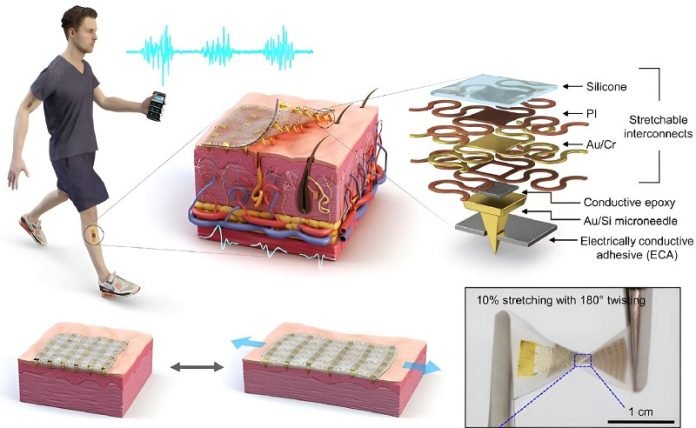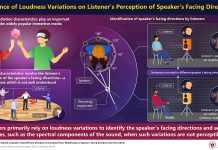
Imagine a world where helping hands come not just from humans but from technology itself.
This is becoming a reality thanks to a groundbreaking development by scientists from the Korea Advanced Institute of Science and Technology (KAIST).
They’ve created a special kind of sensor that sticks to your skin and can understand muscle movements without getting confused by sweat or dead skin.
This invention is a big deal for wearable robots, which are like high-tech supports or aids worn on the body to help people recover from injuries or help the elderly move around easier.
Wearable robots, although sounding like something from a sci-fi movie, are very real and incredibly useful.
They’re being used to help people who are recovering from strokes, traumas, or just need extra support as they get older.
However, there’s been a big problem: the sensors that these robots use to read muscle movements get mixed signals from sweat and skin conditions. It’s like trying to listen to a radio station that keeps getting static.
Enter the team led by Professor Jae-Woong Jung and Professor Jung Kim at KAIST. They’ve developed a tiny, stretchable sticker, loaded with microscopic needles, that can stick to the skin. These aren’t your average stickers.
They’re smart enough to pick up on the body’s natural electric signals without being thrown off by sweat or dead skin. This means the wearable robots can understand exactly what movement you’re trying to make and assist you more accurately.
This new technology is called a stretchable and adhesive microneedle sensor. The microneedles are so tiny that they don’t hurt; instead, they gently penetrate the top layer of the skin to get a clear signal from your muscles.
The sensor is also flexible, so it moves with your body, making it comfortable to wear without losing its grip or effectiveness.
To prove how well these new sensors work, the KAIST team did an experiment. They placed the microneedle sensor on a person’s leg and had them try to lift a heavy object. With the sensor’s help, a wearable robot could understand the person’s intention to lift and provided the needed assistance, making the task easier.
Professor Jae-Woong Jung, one of the lead researchers, shared their excitement about this advancement. He explained that this new sensor could detect muscle signals clearly and consistently, which is a big step forward in controlling wearable robots.
This means more precise and stable help for people who need assistance from these robots, making their rehabilitation process smoother and more effective.
In summary, this new development is not just an improvement in technology; it’s a beacon of hope for better, more reliable assistance for those in need of physical support.
It’s a testament to how far we’ve come in integrating technology with human needs, making everyday tasks easier for those who face challenges.
This innovative sensor opens up new possibilities for rehabilitation, making the future of wearable robots more promising than ever.



